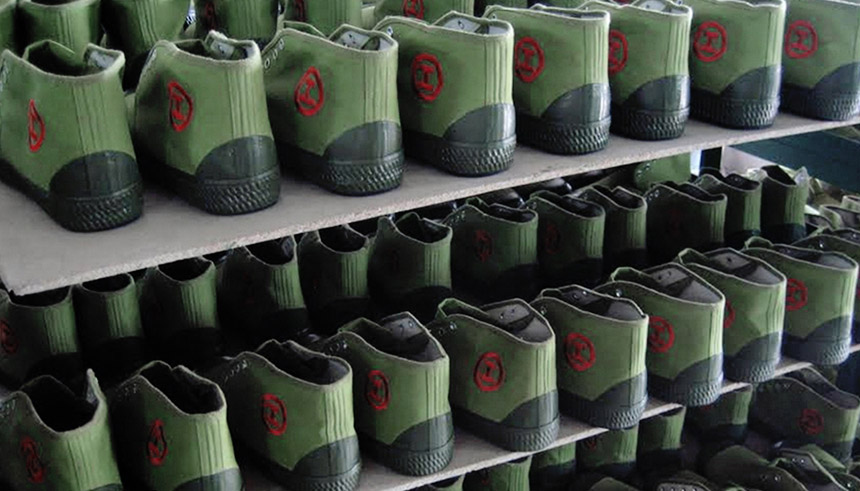US-Asia Business
What it Takes to Set Up Shop in China
By Daniel Allen

Western companies share experiences and provide realistic insights for working in China.
Pausing for thought, Ben Walters recalls his wide-eyed arrival in Shanghai, back in the summer of 2003.
"Driving into the city for the first time, the feeling of huge industry and progress was almost tangible," says the former New Yorker. "One thing that I noticed almost immediately after settling in was the amateurish marketing for Western products. On television, you would see all these advertisements from North America and Europe that had just been crudely overdubbed with Mandarin."
Nearly 13 years later, the pace of China's whirlwind development has hardly diminished, transforming Chinese consumption in ways that Walters couldn't have foreseen.
"China is now home to one of the world's most sophisticated consumer markets," says the entrepreneur. "In those early days, Western firms clearly had no idea how to relate to Chinese people. Now they are collectively spending billions on finely honed advertising, branding, market research.... every company, big or small, is focused on capturing the hearts and minds of 1.4 billion consumers."
Burgeoning individualism
There’s still a ways to go before China chic boasts global appeal, but when it does, Walters can call himself a true fashion pioneer. After arriving in China, he founded OSPOP, a footwear company selling sneakers based on the lowly jiefang xie or "liberation shoe," introduced by the Chinese army back in 1950.
Starting in 2007, OSPOP began manufacturing shoes in China and exporting them overseas. At that stage, Walters felt the Chinese market wasn't ready for such a distinctive, utilitarian product, with conformity still a key factor in many purchasing decisions. Today, things are very different.

"I've seen firsthand how the rise of the individual in Chinese society has radically reshaped consumer behaviour."
"I've seen firsthand how the rise of the individual in Chinese society has radically reshaped consumer behaviour," says Walters. "This, coupled with ever-rising levels of disposable income, means more and more Chinese are now spending money to stand out from the crowd, not blend in with it."
Cultivating guanxi
Betty Trieu has more experience than most with the vagaries of Chinese consumption, especially at the upscale end of the market. A longtime China resident, the Canadian founded her own luxury retail training and consultancy business, EQwiip Consulting Limited, back in 2013. Driven with the momentum of impressive growth, the Shanghai-based firm now has five full-time employees.
Trieu warns Western companies thinking of entering China not to expect much loyalty from the Chinese consumer. The Vancouver native sees the newly moneyed, urban consumer as typically progressive, well-informed and, above all, fickle.
"These guys are very open-minded to what’s new and trendy and are quick to move on to the next latest-and-greatest," says Trieu. "Western companies must discover ways to build stronger, more interesting guanxi (relationships) with their customers to keep them coming back.
"It is extremely important to get brand message and positioning very clear right from the start," she continues. "Aggressive competition and a preponderance of savvy copycats mean that China is an unforgiving market for those Western companies that get it wrong."
Digital dimension
The speed of thought and level of sophistication required when it comes to marketing in China has only increased with the rise of digital commerce. According to New York based research firm eMarketer, the country's 400 million plus online shoppers spent more than US$670 billion last year. This figure is projected to rise to US$3.8 trillion by 2018.
The overarching trend within China's burgeoning digital commerce space is the rise of mobile transactions. According to Internet consulting firm iResearch, which is based in Beijing, 2016 will see more goods in China purchased with mobile devices than PCs for the first time.
Ben Walters, who left OSPOP in May 2014 to take up a position as Asia-Pacific marketing director for Beats By Dr. Dre, sees the trend continuing for the foreseeable future.
"The shift from e-commerce to m-commerce in China is one all Western retailers should be leveraging," he says. "At Beats, we had a 70/30 split in our e-commerce/m-commerce sales 18 months ago. Today it's exactly the reverse.
"The wisest marketing spend today, both for those Western retailers physically based in China, and simply those involved in China-focused digital commerce, is on attracting the Chinese m-consumer," continues Walters. "Sites like Tmall (Alibaba's B2C site) and JD.com offer great analytics when it comes to analyzing the effectiveness of mobile strategies."
Labor pains
Not so long ago, Western companies viewed China as a bottomless source of cheap manufacturing labor. Those days are now over. With demand for skilled Chinese professionals increasing, human resources management is now one of the biggest headaches for Western firms of all sizes doing business in China. Although job openings in such firms may attract a multitude of applicants, discovering the right talent can be difficult, time-consuming and costly.
And with recruitment firm Korn Ferry Hay predicting that Chinese salaries will grow by more than 6 percent in 2016, the HR challenges look set to continue this year.
"The Chinese employment market has come a long way over the last decade," says Ben Walters. "The number of qualified people may have gone up, but the downside is that Western firms now have to pay a pretty penny for skills. In 2016, China is far from being a HR bargain."
"As [the] CEO of a China-based SME, finding and retaining suitably skilled employees is a tough proposition," says Betty Trieu. "My selection strategy is simple: I only recruit skilled employees who are bilingual, with an entrepreneurial mindset, and who are consistently creative, proactive and self-motivated."
Many Western companies in China, particularly those in the early stages of establishing themselves in the market, fill their top positions with expatriates. This practice creates a "glass ceiling" for Chinese employees and can sometimes lead to poor retention rates.
"I deliberately keep the ratio of foreign to Chinese employees in my company around half and half," says Trieu. "This, coupled with competitive remuneration, good training and a relaxed work environment, has fortunately kept my employee turnover really low.
"Foreign-owned SMEs should, however, be aware of Chinese labor laws which protect local Chinese employees, sometimes in ways that are unreasonable," she adds.
Protecting property
"We can copy everything except your mother" runs the well-known Shanghai expression, neatly encapsulating China's vigorous counterfeiting industry. The Office of the United States Trade Representative publishes an annual list of countries that need to strengthen their intellectual property rights protection. China has featured on this list continually for more than 25 years.
Ben Walters has firsthand experience with China's intellectual property minefield. When he launched his sneakers onto the Chinese market in 2010, he said he discovered pirated copies of his shoe already for sale and Chinese companies wrangling over the OSPOP trademark. When a Guangzhou food company offered Walters the trademark for RMB 1 million (USD$150,000), he politely declined.
Intellectual property is undoubtedly a critical consideration for North American SMEs that come to China wishing to tap into the market potential for business growth, or the talent pool for technology development. Yet despite his trials and tribulations, Walters believes concerns over intellectual property shouldn't stop SMEs from establishing themselves in China.
"Yes, the Chinese market can be a tough proposition when it comes to IP," says the OSPOP founder. "Any Western SME thinking of establishing operations in China should definitely take legal advice well in advance of stepping foot in the country.
"But there are now enough Chinese consumers demanding genuine products to really make the decision over whether or not to be here a total no-brainer for Western brands," continues Walters. "After all, a North American company can still be vulnerable to China-related IP issues even when it has no China-based operations."
Partners and preparation
Some Western SMEs still enter China with an ill-informed, hit-or-miss approach, relying on the promise of massive profits without undertaking the necessary research and groundwork. Although the market is huge, so is the competition, and there are numerous pitfalls.
"First and foremost, make sure you have reliable partners," says Ben Walters. "Leverage their skills and insight and don't rush in.
"On the other hand, don't be scared of China either," he continues. "I've learned that it's far better to be on the ground here, engaging with challenges head-on. Obviously every SME is different, but if you're not already in China, make 2016 the year to look at it seriously."
"General advice on selling to the 'Chinese market' can be a massive generalization," says Betty Trieu. "What sets China apart from other markets is its sheer size and diversity, which makes targeted insider knowledge that much more valuable."
So if she could offer one piece of advice to a Western SME on the verge of venturing forth into China during the Year of the Monkey, what would it be?
"The chances are, they won't have experienced a market that is changing so rapidly," says Trieu. "Be flexible. Be prepared to improve and evolve your product almost overnight."
Sign up for the Reach Further Newsletter
We’ll keep you in the know about the latest US-Asia business news and trends.
Suscríbase al boletín Reach Further
Lo mantendremos informado sobre las últimas noticias y tendencias comerciales entre Estados Unidos y China.

